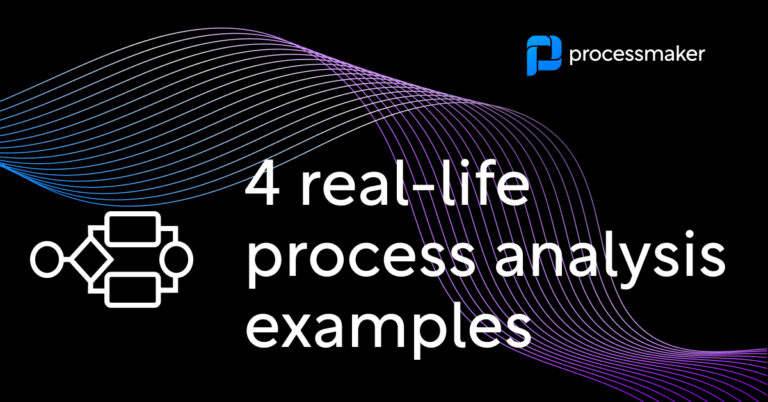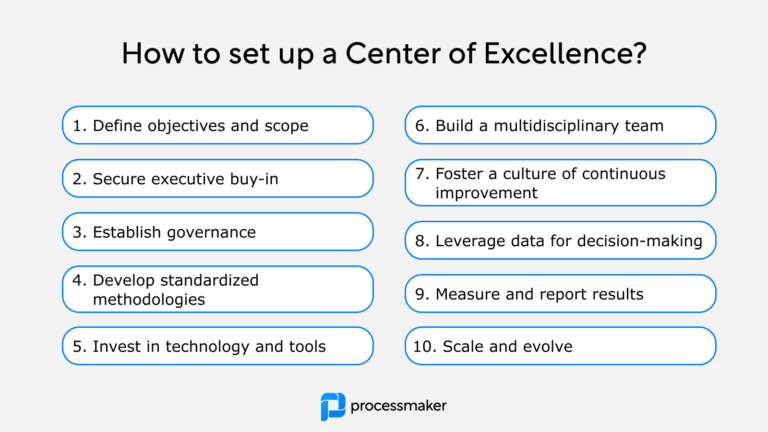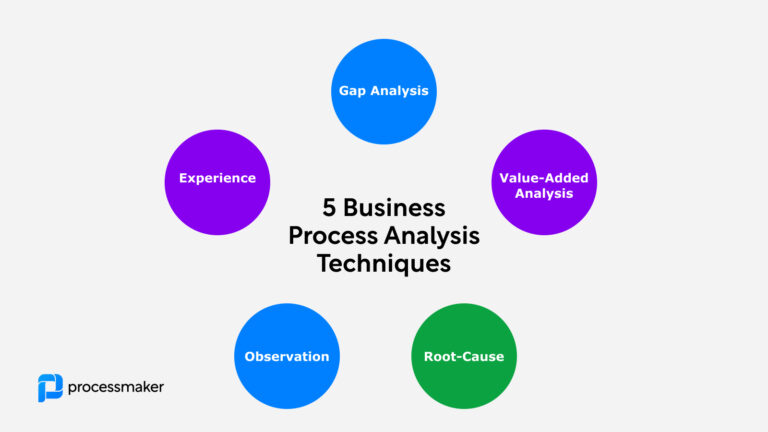Process analysis is one of those areas of business process management where everyone has their own view but you can never get enough actual case examples of processes that have been improved. Understanding the concept of a process analysis essay can also be beneficial, as it breaks down a complex process into clear, sequential steps, much like how business process analysis aims to improve operational efficiency.
To give you real business process analysis examples, we’ve asked operational excellence sherpa Peter Evans to share some of his favorite process analysis methods across his 30 years of experience analyzing and transforming business processes for some of the world’s greatest enterprise business operations in companies such as GE Capital, Virgin Media, and LEGO Group.
Before we hear Peter’s three classic case examples let’s cover some basic questions on business process analysis.
What exactly is business process analysis?
Business process analysis (or BPA) is a systematic approach to understanding, evaluating, and optimizing the processes within your organization. It involves analyzing processes to identify the current state of each process, finding areas for improvement, and implementing changes to maximize efficiency and effectiveness.
Definition of Process Analysis
Process analysis is a systematic method of examining how work is done in an organization. It involves breaking down a process into its component parts and studying each part to determine how it contributes to the overall outcome. This method can be applied to any process within an organization, from manufacturing and logistics to customer service and administrative tasks. By dissecting each step, organizations can gain a comprehensive understanding of their operations, identify inefficiencies, and implement improvements.
For instance, in a manufacturing setting, process analysis might involve examining the steps involved in producing a product, from raw material procurement to final assembly. By analyzing each step, manufacturers can identify bottlenecks, streamline workflows, and reduce production costs. Similarly, in a customer service context, process analysis can help organizations understand the flow of customer interactions, identify pain points, and enhance the overall customer experience.
In essence, process analysis is a powerful tool that can help organizations improve their operations, increase efficiency, and achieve their business goals. Whether you’re looking to optimize a complex process or simply understand how a particular task is performed, process analysis provides the insights needed to drive continuous improvement.
Is business process analysis the same as process mapping?
Process mapping is one key tool for analyzing business processes, but it’s not the only one. In this article, Peter will share with us three more specific examples of value stream mapping, root cause analysis, and workflow analysis.
A directive process analysis provides specific instructions for achieving a goal, such as a recipe for making waffles, whereas an informative process analysis focuses on describing a subject in detail.
For the sake of clarity let’s define business process analysis simply as the evaluation of the “as is” state of any existing processes in order to map or model the “to be” state of process improvement.
Why is process analysis important in business operations?
Business process analysis is crucial for organizations of all sizes because it helps uncover inefficiencies, bad business process design, and wasted work that can hinder growth and success. By analyzing your business processes, you can ensure they are aligned with your key objectives and create a roadmap to achieve your goals.
A clear process analysis essay structure is essential for maintaining reader engagement, as it breaks down the content into specific sections like introduction, materials needed, step-by-step instructions, and conclusion.
What are the key benefits of a comprehensive understanding of business process analysis?
Each business has its own goals and objectives. Some companies will be doing process analysis to automate processes, while some are simply looking to uncover inefficient business processes. Some are looking for cost savings, while others are looking to drive more sustainable continuous improvement.
A process analysis essay outline is crucial for presenting a process or task effectively, as it provides a structured framework that emphasizes clarity and organization.
Business process analysis can also provide different benefits to each organization depending on its own business targets, operational maturity level, and key performance indicators.
Broadly speaking, business process analysis looks to do three things:
- Improve efficiency. One of the main benefits of business process analysis is the increased efficiency it can bring to your organization. By streamlining processes and eliminating waste, you can save time, resources, and money, allowing you to focus on what really matters: growing your business.
- Increase agility. For many businesses, speed is money. Whether you measure lead time or throughput time, most business processes can be analyzed and streamlined to reduce the time of work. Through business process analysis, you can identify areas where your organization can be more agile and responsive to customer needs and changes in the market, ensuring you stay competitive and ahead of the curve.
- Reduce cost. Most businesses look to keep operational costs as low as possible, and for many businesses, the cost of manual tasks and complex processes quickly adds up. The reality is that sometimes business process analysts are tasked with simply reducing costs or finding ways to re-engineer the cost base of key business processes.
Industries and Functions
Process analysis is a versatile tool that can be applied across various industries and functions. Here are some examples of how different sectors can benefit from process analysis:
- Manufacturing: In the manufacturing industry, process analysis can help identify bottlenecks in the production process, streamline workflows, and improve overall efficiency. By analyzing each step of the production line, manufacturers can reduce waste, lower costs, and increase output.
- Healthcare: Healthcare organizations can use process analysis to streamline patient care processes, reduce wait times, and improve the quality of care. For example, analyzing the flow of patients through an emergency department can help identify inefficiencies and implement changes to enhance patient outcomes.
- Finance: Financial institutions can benefit from process analysis by identifying areas for improvement in transaction processing and customer service. By examining each step of a financial transaction, banks can reduce processing times, minimize errors, and enhance customer satisfaction.
- Retail: Retailers can use process analysis to optimize their supply chain and inventory management processes. By analyzing the flow of goods from suppliers to store shelves, retailers can reduce stockouts, minimize excess inventory, and improve overall efficiency.
- Customer Service: Process analysis can help organizations improve their customer service processes and reduce customer complaints. By examining the steps involved in handling customer inquiries and resolving issues, companies can identify areas for improvement and enhance the overall customer experience.
By applying process analysis to these and other industries, organizations can gain valuable insights into their operations, identify inefficiencies, and implement changes that drive continuous improvement.
Four real-world examples of business process analysis
If you’re looking for real examples of business process analysis, look no further.
We’ve asked our Operational Excellence expert Peter Evans to share examples from his experience of different kinds of business process analysis cases, the key challenges, and their outcomes. These include process analysis essay examples that demonstrate the breakdown of complex procedures into clear, manageable steps.
To start, let’s go through a value stream analysis case from Peter’s time in the aviation leasing industry.
1: Value stream mapping of core business processes
Value stream mapping involves analyzing the flow of materials or information within an organization to identify areas of waste and improve overall efficiency. This is akin to process analysis essays, which break down and explain various procedures or tasks into manageable steps. Value stream mapping can help organizations streamline their business processes and reduce costs.
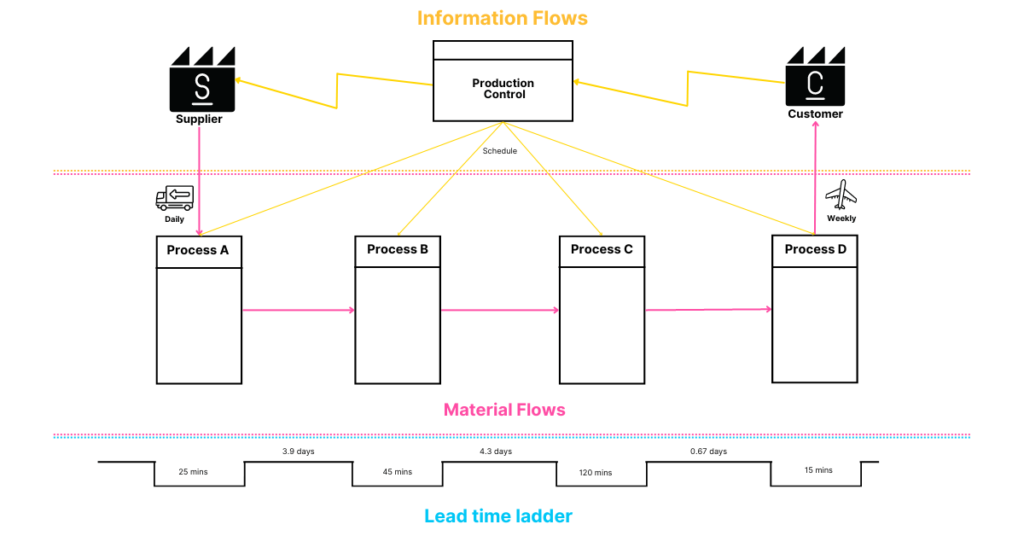
Simplified value stream map diagram example
Peter’s case example: value stream mapping to diagnose finance close process
Peter shares a case from his time with GE Capital Aviation Services (GECAS) in the 1990s where he was challenged to shorten the amount of time it took to close accounting books.
“As a starting point, in GECAS, we saw about 13 or 14 days of work for us to close our books. The challenge came down to try and close in three days. The only real approach to that, is you either start with a completely blank piece of paper, which is very hard to do, or you start by mapping the process. Right from start to finish and understanding within that process where the big chunks of time and the big chunks of effort are.
In our case, we literally picked the process apart. So together with a team from finance, we had a look at all of those big chunks and then created charts just to show where those problems were. Our analysis uncovered a classic Pareto chart – where 80% of problems came from 20% of the work. By analyzing the full close process, we found the throughput time was impacted by things like manual journal entries and other garbage you have to wade through to get your books in balance.
Once we had the full process map, we evaluated where the true value came from and what we could do to decrease non-value-added work. Then, we systematically attacked inefficiencies and took out thousands and thousands of manual journal entries and accruals and all that other stuff that you have to do yourself to the point where you can close your books. The net effect of that project was that we were the first group within GECAS to get ourselves down to three days closing.”
Peter’s advice: “Value stream analysis helps you rethink why people work the way they do. Accounting is a good example of a function where there are all kinds of tasks where people will check things, and checkers will check the checking another time around. You map all those things in a value stream and analyze where is the value added of all these rounds of control. Often you find ways to get around manual work or identify ways to do things more efficiently.”
2: Root cause analysis to identify bottlenecks in an end-to-end process
Root cause analysis is a technique used to identify the underlying causes of problems within a business process. By finding the root challenges, organizations can address issues at their source and implement lasting improvements.
An informational process analysis essay is a type of essay that aims to inform the reader about a specific topic rather than giving instructions. It is important to differentiate between informative and directive process essays and to structure the content clearly to maintain reader engagement.
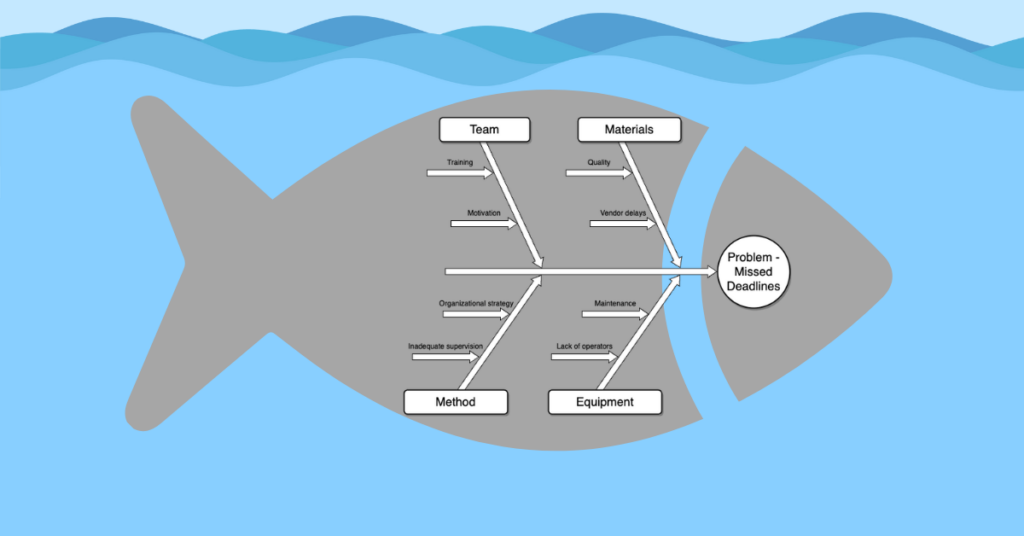
Simplified fishbone diagram example of root cause analysis
Peter’s case example: root cause analysis to optimize hospital capacity
Peter gives an example for analyzing root causes from the field of emergency healthcare services. More specifically, he recounts the analysis he has witnessed to analyze the flow of patients from triage in the accident and emergency (A&E) departments to other specialist units.
“The goal for the first-line emergency services like the A&E department is often to clear them out of there as soon as they possibly can, because they want to maintain capacity, they need the facility and the staff to be able to work with the next patient.
If you look along the client flow within a hospital, there’ll be intensive care wards, there’ll be other specialist areas where the patients can be sent for further care after A&E. What you often find in that scenario, is that people are not looking at the overall process, they’re only looking at their piece of a process. You actually find a massive disconnect within different hospital departments.
To understand the challenge, you can use root cause analysis. You go to the key stakeholders and ask questions like:
- why do we transfer patients like this?
- why can’t we get them into the next department?
- why don’t we have any beds ready?
In this case, one of the root causes may not be that the doctors are doing a bad job of signing off patients, but the process was designed so that they only did it in the afternoon or at a specific time during their shifts. These misalignments within processes between departments can be fixed and it can have a big impact on the big picture.”
Peter’s advice: “Root cause analysis is absolutely vital. The problem comes if you stop too early. Then you’re not solving a root cause, you’re solving a symptom. That can happen quite a lot. So, in my analysis, I’m dogged about really digging into things to the point where you can be satisfied from a data point of view and from a process point of view that you’ve really got to a root cause.”
3: Workflow analysis as part of business process analysis
Workflow analysis involves mapping out the current workflows within an organization to identify bottlenecks, redundancies, or other inefficiencies. This analytical approach is similar to writing a process essay, where each step is carefully examined and documented. This can help businesses optimize their processes and increase efficiency.
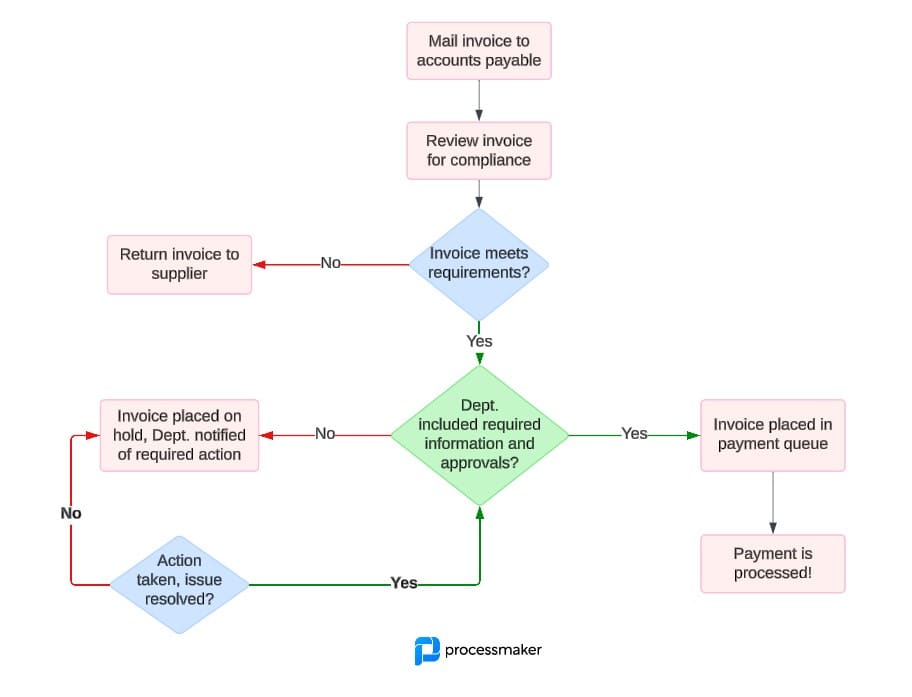
Simplified workflow diagram for accounts payable
Peter’s case example: analyzing accounts payable workflows in telecoms
Peter shares a case from his time working in the telecommunications industry with Virgin Media. in the 2000s where he was tasked to go and look at the shared services piece of finance operations with a target to identify operational efficiencies.
“We heard that the accounts payable process was very clunky and very manual at the time. Cycle times were very long and we didn’t have a great reputation for our ability to pay on time.
When we went to look at the place, we were very frustrated by what we saw. We looked at a number of things. One, how invoices were received and what we were doing about them. At the time, we were still manually sorting posts and we were making a terrible pig of that. It took hours when it should have taken minutes.
We then had a sorting process, which wasn’t very efficient and wasn’t really traceable. We then kind of put invoices into files and drawers and hoped that people would process them in the right order. All of those things are non-value adding from a point of view of our ability to pay our supplier on time.”
Once the key workflow challenges were identified, it was time to bring about process improvements.
“Basically from there, we took a number of approaches. We brought in one or two quick wins for getting the post sorted on a daily basis. We worked with the AP team slowly but surely to improve each aspect of the process. Changing workflows wasn’t easy. It included challenging a couple of the biggest naysayers in terms of what we were trying to do. We ran some very clear sessions for them, understanding their processes and getting to the point for them to realize perhaps their baby wasn’t as pretty as they’d like.”
Peter’s advice: “Workflow analysis is about chipping away at inefficiencies to really understand how processes work and moving them forward. You can’t stop with the analysis. Real improvement involves upskilling the actual people who do the work to recognize where waste is happening and systematically removing them.”
4. The Gemba Walk inspired by lean manufacturing
Let’s hear one more real case example where Peter recounts the case when he got to visit a production facility for the world-famous toy company, the LEGO Group. This case is an example of the “Gemba Walk” method, where you go and observe the actual place where work happens.
A memorable conversation from the factory shop floor
During his time working for the LEGO Group Peter Evans led continuous improvement initiatives that took him to different parts of the world to see how different business units functioned. One way Peter recommends starting and understanding processes is what lean coaches call a ‘Gemba Walk.’ In this method, you go to the place where work happens and you sit and watch what’s going around you.
“I was working mostly in the back office space, but I was really interested to see what work they’d done on the shop floor in manufacturing. While I was visiting our factory in Monterrey (Mexico) I once got permission to go down and sit in some of the morning huddles.”
Below is the way Peter remembers a conversation taking place between a team lead and the shift workers during a memorable morning huddle:
Team lead: Was there anything on safety to report?
Answer: Yes. We had an incident yesterday where somebody cut his hand on a machine.
Team lead: Ah, okay. Is the guy okay?
Answer: Yeah, we took him off. He’s got some stitches. He’s perfectly okay now and he’ll be alright again. Everything is fine.
Team lead: Why did that happen?
Answer: Well, on the machine, there’s a moving part, and that moving part over time was sharpening one of the rails and the man cut his hand on one of those sharp rails.
Team lead: Ok, why was the rail sharp?
Answer: It was sharp because of this […] issue with moving parts.
Team lead: What did you do to fix it?
Answer: Well, I replaced that rail.
Team lead: Okay. Do we have any other machines that are like that?
Answer: Actually, I went around and found 27 other machines that had the same problem or had the potential for the same problem.
Team lead: What did you do about it?
Answer: I changed them. I also put a process in place to check that rail on a daily basis to make sure that it’s safe and make sure it’s okay.
How the LEGO Group’s continuous improvement mindset can inspire process analysis
The conversation above shows how deeply the mindset of continuous improvement can be embedded in effective manufacturing operations. It wasn’t enough to analyze safety risks, employees took it as their responsibility to fix the problem beyond the initial scope of risk. This kind of behavior can be inspiring to observe during a walk on the shop floor, but it can also inspire a similar mindset across business operations.
Nurturing the continuous improvement mindset of business process analysts
In Peter’s experience, effective business process analysis is as much a mindset as a set of tools. Much like the example of shift workers in the LEGO Group factory, the people who hunger for continuous improvement are the ones who learn to adapt the tools and thrive the most in continuous process optimization.
Business process analysis is not always a case of health and safety, but the same mindset of continuous improvement can lead to the longest-lasting results in business operations. After 30 years of working in operational excellence, Peter Evans got the opportunity to train many colleagues as lean coaches and embed the culture of continuous analysis and improvement into different business functions.
“In Virgin Media, we had an effective method, where we’d first assess process capabilities and sign off our understanding. Then, we’d go through training to understand the methodologies and technologies that we recommended using. Finally, we’d assign a “lean coach” from within the working team to continue the journey. These lean coaches would drive against the plan, understand how to tackle the key challenges, and were trusted by the local managers and team. Today, 10 or 15 years later, some of these lean coaches we trained have learned so much by doing they are in very senior roles, driving improvements everywhere.”
Bottom line on business process analysis examples
In this article, Peter Evans shared four popular business process analysis methods: value stream mapping, root cause analysis, workflow analysis, and the Gemba Walk method.
There are hundreds of methods you can use for process analysis, from process mapping to Lean or Six Sigma methods and even process mining software. Instead of giving recommendations on one key tool, we saw from Peter’s real-world examples how analysis is often just one part of a bigger equation in the mission for process excellence and continuous improvement. On this journey, the enthusiasm and curiosity of your team are key to long-term results.
Selecting interesting and relevant process analysis essay topics is crucial for effective writing. Engaging topics that resonate with readers and highlight the step-by-step breakdown of everyday processes can enhance reader curiosity and improve the effectiveness of the essays.
Best practices for process analysis
To effectively conduct process analysis and achieve meaningful improvements, organizations should follow these best practices:
- Identify the particular process: Start by selecting the specific process to be analyzed and clearly define its boundaries. This ensures that the analysis is focused and relevant.
- Gather information: Collect detailed information about the process through process documentation, stakeholder interviews, and data collection methods. This provides a comprehensive understanding of how the process currently operates.
- Map out the process: Create a visual representation of the process using a process flowchart or process map. This helps to identify each step and understand the flow of work.
- Analyze each step: Examine each step in the process to identify areas for improvement. Look for bottlenecks, redundancies, and inefficiencies that may be hindering performance.
- Identify bottlenecks: Pinpoint areas where work is duplicated, unnecessary, or inefficient. These bottlenecks are often the key to unlocking significant improvements.
- Develop improvement strategies: Based on the analysis, develop strategies for improving the process. This may involve redesigning workflows, automating tasks, or implementing new technologies.
- Implement changes: Put the improvement strategies into action and monitor their effectiveness. This ensures that the changes lead to the desired outcomes.
- Continuous review and refinement: Process analysis is an ongoing effort. Continuously review and refine the process to ensure it remains efficient and effective over time.
By following these best practices, organizations can use process analysis to gain a comprehensive understanding of their business processes, identify areas for improvement, and implement changes that increase efficiency, reduce costs, and improve customer satisfaction.
